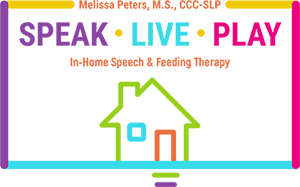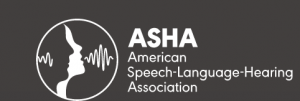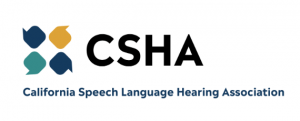Pediatric Voice Disorders: Diagnosis, Treatment, and Management
Pediatric voice disorders occur when a kid’s voice has noticeable differences in pitch, loudness, and quantity when compared to other kids of the same age and sex. Voice disorders are quite common in kids, with about 5% of the kids having chronic voice disorders. Kids with voice disorders tend to have a voice that is hoarse, too loud, very high or low, or too nasal.
When diagnosing voice disorders, experts categorize them according to either organic or functional etiology. Under an organic etiology, the disorder develops due to structural abnormality that affects the vocal mechanism. The functional etiology refers to the improper use of the mechanism that produces sound. A speech-language pathologist (SLP) can help in diagnosing and treating voice disorders. Read on to get more information on the symptoms, causes, and how an SLP can help in treating pediatric hyperfunctional voice disorder.
How does your voice work?
Before we dive into the details of pediatric hyperfunctional voice disorders, it is imperative to understand the components of the voice and vocal. For starters, voice and speech are entirely different. Voice disorders develop when there is difficulty producing the sound and not forming words. The issues in sound production arise from the voice box (larynx), and some common examples include a horse or quiet voice.
When producing sound, air travels from our lungs to the voice box. The voice box or larynx has the vocal cords, which vibrate to produce sound. The produced sound travels to the pharynx, nose, and mouth. A person can make different sounds when we move the sound articulators, which include the lips, jaw, and tongue. People’s voices sound different because of various reasons. One, the size of the vocal cords varies in thickness and length. Second, the shape and size of the mouth, pharynx, and nostrils are different from one person to the other.
Causes of Pediatric Voice Disorders
The main pediatric hyperfunctional voice disorder causes are functional issues or structural issues. Functional problems include phono trauma, which develops when someone yells excessively or clears their throat too often. Functional issues also occur when there is abnormal muscular tension in the voice box or vocal fatigue, which may happen when a person speaks too much. Examples of structural issues are such as vocal cord abnormality that develops due to vocal swelling or nodules.
In kids, most voice disorders occur due to vocal strain due to clearing the throat excessively, yelling, making loud sounds when playing, excessive coughing, and poor vocal hygiene. Experts at the pediatric voice disorder conference also agreed that poor vocal hygiene may include things like excessive strain, not hydrating enough, and poor breath support when talking. The voice above behaviors forces the vocal folds to close tightly against each other, forming blister-like bruises, which harden to form vocal nodules. Other common voice disorder causes include:
- Common childhood infections
- Vocal cord cysts
- Voice cord paralyzing which restricts the movement of one or both vocal cords
- Extreme use of harsh voice sound effects during play
- Papilloma, which is a wart-like growth
- Development of band of tissues between the vocal cords (laryngeal web)
- Narrowing of the airway (Subglottic stenosis)
- Excessive muscle tightness, which results in a strained voice
Hoarse voice
Kids frequently experience voice hoarseness. Voice hoarseness is closely related to the youngsters’ speaking and is rarely a cause of alarm for parents. If your kid has a hoarse voice, they may require a joint assessment by a speech-language pathologist and ENT specialist at a voice clinic. If your kid has a hoarse voice, they may require a joint assessment by a speech-language pathologist and ENT specialist at a voice clinic. Other frequent reasons for kids’ voice hoarseness include:
- Vocal cysts/ nodules or polyps: These are benign vocal cord lesions that occur due to tissue stress after excessive voice usage, such as yelling, sobbing, or continuous loud speech. Encourage your kid to relax their voice by avoiding speaking loudly or yelling too much when playing.
- Infections: A hoarse voice is common in children with a viral illness, such as a cold or inflammation of the voice box (laryngitis). The hoarseness is generally brief and goes away as the virus clears. Encourage your kid to drink plenty of water and relax their voice until they recover. On rare occasions, hoarseness in children occurs due to Recurrent Respiratory Papillomatosis, tumors, or cancers. An ENT specialist will help in the management and treatment of these conditions.
Weak voice
Poor movement of the vocal cords or insufficient sealing of the vocal cords during speech causes a weak voice. Vocal fold paralysis or laryngeal narrowing are also possible causes. Kids who have used a breathing tube during an illness are more likely to have a weak voice and may have long-term vocal disorders. Some surgical techniques repair vocal cord paralysis in adults; however, these are rarely performed on children. Children with weak voices may benefit from voice treatment.
Abnormal-sounding cries or noisy breathing in infants
If your toddler’s cry is faint, harsh, or hoarse, visit a doctor or ENT specialist for assessment. Laryngomalacia, often known as floppy larynx, is a prevalent trigger of noisy breathing in newborns. It usually goes away by the time your kid reaches the age of two years. If your kid has laryngomalacia, specialists will regularly watch them to ensure they continue breathing properly. If the problem is serious, surgery is required.
Symptoms of Pediatric Voice Disorders
There are several forms of pediatric hyperfunctional voice disorders, and some are present at birth while others develop over time. Many illnesses have similar symptoms. As a result, kids with a suspected voice issue must contact a professional for a diagnosis. Some of the common symptoms of pediatric voice disorders include:
- Having voice hoarseness regularly
- Breathiness and Strain
- Intermittent voice loss during events such as singing, athletics, and other activities that demand a lot of raising of the voice
- A volume that is too loud or too soft
- Voice pitch is notably higher or lower than peers.
Assessment of Pediatric Voice Disorders
A speech-language pathologist can help in the assessment and diagnosis of the voice disorder. The voice assessment includes taking the case history and using qualitative and quantitative measures. The measures include both perceptual and instrumental assessments. In perceptual assessment, the expert can utilize the consensus perceptual evaluation of voice test, which studies the kid’s sound loudness, pitch, and quality. Regarding the instrumented assessment, the specialist will examine the kid’s voice and the vocal mechanism by looking at the laryngeal imaging through videolaryngostroboscopy. The expert can also perform further tests, such as an aerodynamic assessment and acoustic assessment, using various instruments and software.
Pediatric Voice Disorders Management
Most minor to mild pediatric hyperfunctional voice disorders respond well to voice therapy. An SLP will use various techniques to help the kid produce a normal sound that doesn’t irritate the voice folds. In some cases, the voice disorder may require surgery or medical treatment. Doctors also recommend voice therapy after surgery. During the therapy sessions, the kid will learn new habits and patterns of voice production and eliminate the old ones.
Voice therapy can include:
- Identification and elimination of harmful voice patterns that cause voice disorders. These patterns include screaming, yelling, and making loud noises when playing.
- Use specific voice exercises that strengthen, balance, and promote healthy vibration of the vocal cords.
- Improving vocal fold health by ensuring proper hydration and avoiding caffeine
- Learning new techniques on voice production when speaking
Caring for your child’s voice
The primary goal of voice therapy is to enable your kid to have a new, improved way of producing voice. The therapy teaches the child techniques that help them exercise and produce voice without straining their vocal cords. Family and caregivers should also encourage using these techniques to help their kids overcome the disorder. Leading by example, where you utilize the techniques, will allow your kid to learn the techniques from you as a parent. It is also important to reward good voice habits to help your kid improve their voice. The following tips are useful for parents with kids with pediatric hyperfunctional voice disorder.
- Model the use of a soft, gentle voice. Avoid shouting or screaming by walking close to your listener before talking.
- Drink plenty of water and avoid drinking coffee or soft drinks. Proper hydration ensures that the vocal cords produce sound more effectively.
- Take turns talking to your kid and other people in your home. When people talk at the same time, it leads to shouting, which hurts the vocal cords.
- Play with various voices with your kid to make them more aware of varying degrees of pitch, loudness, pitch, and clarity. For example, start talking softly to them and gradually increase your volume until your voice is audible. Discuss how voice sounds are faint, a little louder, and loud and which degree of volume is preferable for communicating in certain contexts. Use the same approach to differentiate between delicate and harsh/rough voices.
- Schedule short periods of voice rest. For instance, you can play a game that does not require the kid to speak.
Some other behaviors or environments can hurt the voice of the kid. These include
- Dusty, smoky, and other polluted environments
- Excessive throat clearing and coughing
- Lack of hydration- Instead of accessional water-guzzling, encourage the kid to have regular small sips of water.
- Increased anxiety or stress
Conclusion
When dealing with Pediatric Voice disorders, it’s crucial to seek professional guidance for proper evaluation and treatment. Speak Live Play offers specialized therapy for children facing such challenges. Our expert therapists, well-versed in Pediatric Voice disorders, can provide the necessary support and techniques to improve sound production, ensuring the vocal cords are not irritated.
Don’t wait if you notice persistent issues with your child’s voice. Contact Speak Live Play today and take the first step towards better vocal health for your child!



